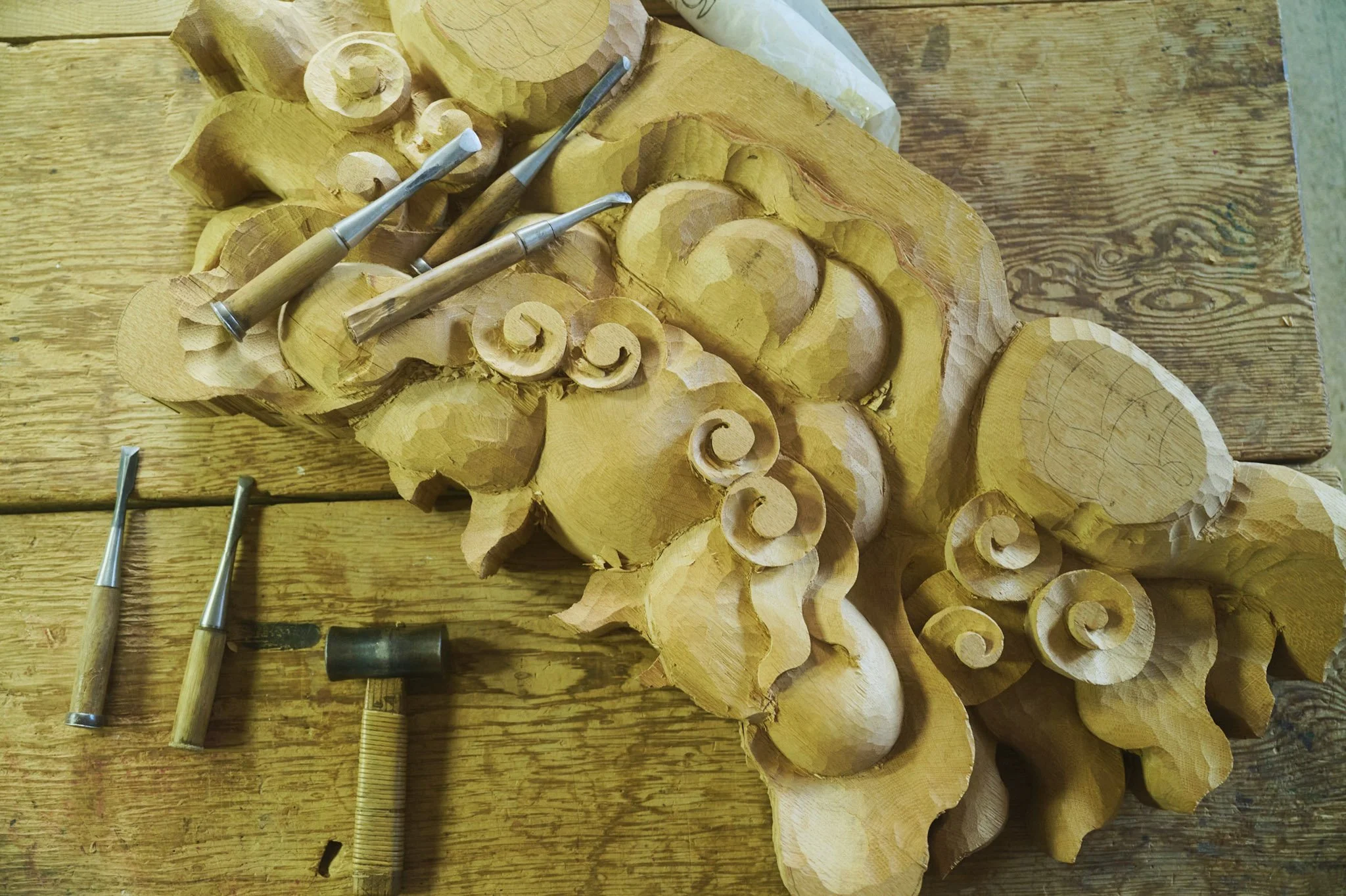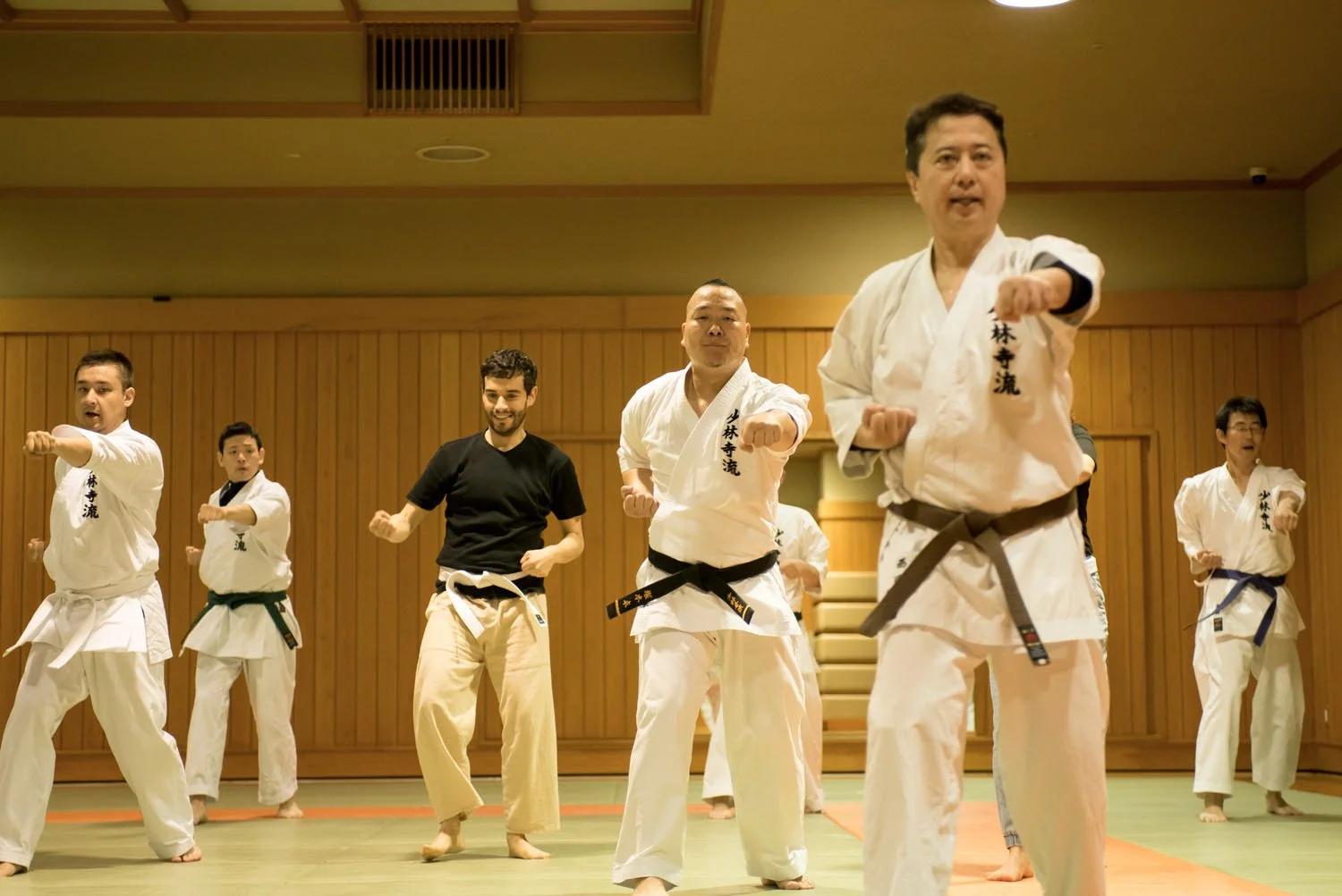
A craft carving heritage
Japanese woodworking creates elegance from simplicity, with smooth edges and joints seamlessly interlocking.
An Introduction to Japanese Woodworking
The intricate, towering structures of temples constructed without the use of even a single nail, able to endure centuries of wear & tear and survive the frenetic shaking of earthquakes. The glossy sheen of urushi lacquer brushed atop the curved edges of a wooden bowl or tea container, then treasured for generations. The lattice-like kumiko constructions, comprised of countless small pieces adhered by glue and precise angles. The craftsmanship involved in Japanese woodworking has not only been refined over countless centuries to produce masterpieces such as these, but has also achieved international acclaim for its diverse range of techniques and technical mastery.
Iconic structures such as Kyoto’s Kiyomizudera or the carved faces of Nikko’s Toshugu temple expertly showcase the cultural importance of woodworking within Japanese society and history - but what is unseen when visiting these masterpieces is the processes of the master artisans who made such awe-inspiring beauty possible. Carvers and carpenters who expertly shave away layer after layer to create a seamless fit. Furniture constructed to suit traditional minka and machiya homes, made for passing down for future generations. Only a visit to a Japanese woodworking studio, where masters diligently preserve these ancient woodworking techniques, demonstrates the skill and investment that goes into creating these wooden treasures.
Learn about the world of Japanese woodworking with Deeper Japan, touring the studio of masters or making your own creation.
In this Guide:
The history of bonsai
What are the different types of bonsai trees
Bonsai experiences in Japan
Further reading on bonsai
Bonsai FAQ
While an art that was originally imported from China during Japan’s Heian Period, bonsai soon developed into its unique style and practices. Within Japan, bonsai got its start at temples, and later, the homes of aristocrats; however, it was only a matter of time before the art of bonsai took root with the samurai warrior class, too.
Then, the popularity of bonsai flourished in the Edo Period, as the stability of the era led to larger cities, the development of art, and an expansion of social classes, allowing bonsai to proliferate to wider audiences. Bonsai artists began refining distinct styles of bonsai, such as the formal upright (chokkan), informal upright (moyogi), and cascading (kengai) forms.
When Japan opened its borders in the Meiji Period, bonsai began to soar in international recognition, exhibited at international expos and captivating worldwide attention.
Today, bonsai continues to attract enthusiasts all across the world.
The History of Bonsai
Different Japanese woodworking techniques
Kumiko
Shohaku bonsai present the quintessential image of bonsai - unchanging evergreens, with elegant stability, unchanging even as time passes.
While evergreens still lose their leaves, the shedding happens gradually; one by one, rather than in a seasonal cycle. Most iconic are the conifer trees, such as juniper and pine, which often require great skill and patience to shape.
Oftentimes, these hardy bonsai are best grown outdoors, thriving in hot and cold climates.
Some common evergreen bonsai trees include the ficus, juniper, spruce, pines (like black or red pine), and redwoods.
Sashimono
Bonsai trees, like Japanese maple, transform into stunning shades of red and gold during Japan’s autumn, while others, like the sakura cherry tree, erupt into soft, delicate hues of pink in spring.
While often requiring more careful attention during the summer season, deciduous bonsai trees delight in their ever-changing appearance.
Some common deciduous bonsai trees include the Japanese maple, Chinese elm, cherry, oak, and wisteria.
Transom Carving
Bonsai trees, like Japanese maple, transform into stunning shades of red and gold during Japan’s autumn, while others, like the sakura cherry tree, erupt into soft, delicate hues of pink in spring.
While often requiring more careful attention during the summer season, deciduous bonsai trees delight in their ever-changing appearance.
Some common deciduous bonsai trees include the Japanese maple, Chinese elm, cherry, oak, and wisteria.
Japanese Woodworking Masterclasses
Shape bonsai under the instruction of a bonsai master, dive into the natural elegance of bonsai in Japan, and explore a wide range of authentic experiences during your next trip to Japan.
Tokyo
Dive deeper into Japanese woodworking
History of Bonsai
Discover more about bonsai’s origins in Japan and its development over time.
Japanese Gardens
Learn about the artistry and aesthetics behind traditional Japanese gardens.
The Start of Botany in Japan
From bonsai masters to ikebana artists, learn about the start of botany in Japan and how it shaped the perspective on nature.
Japanese woodworking FAQ
-
Bonsai are exceedingly difficult to export from Japan, with restrictions differing by species. It must be inspected in Japan and receive a quarantine certificate before leaving the country. Soil importation is frequently outright banned, making the exportation process quite delicate.
-
Bonsai are limited by the container or pot in which they are planted. By routinely pruning branches and roots, bonsai enthusiasts can keep their bonsai plants both healthy and miniature in size.
-
Bonsai can grow to be hundreds of years old, passed down in families for generations. In the Omiya Bonsai Village, for example, one juniper tree is over 1000 years old.
-
Some of the most common bonsai trees in Japan are pines, maples, junipers, and ficus. Evergreen species keep their leaves, while deciduous shed leaves in fall.









